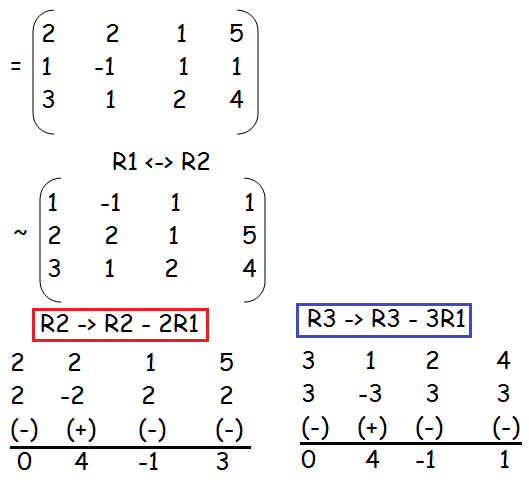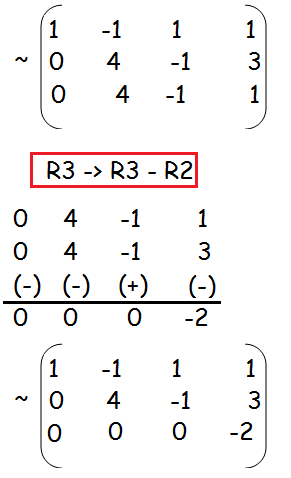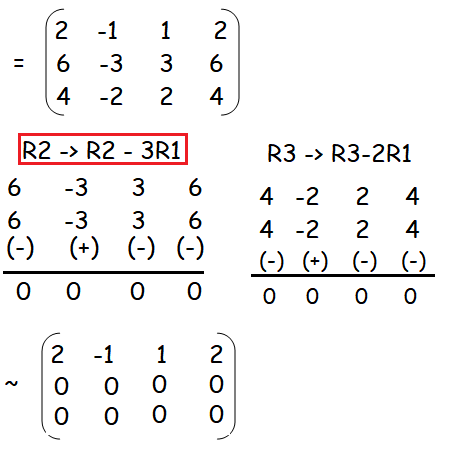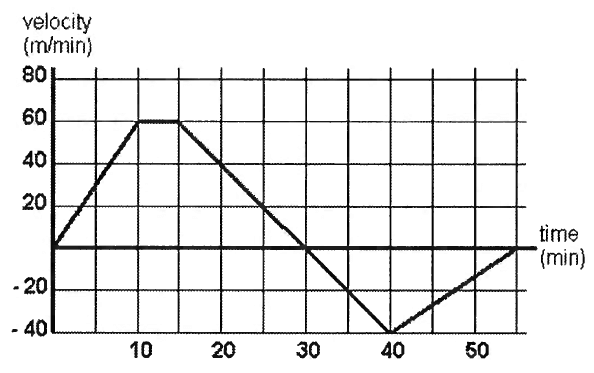SOLVING LINEAR EQUATIONS IN THREE VARIABLES USING RANK METHOD
- If there are n unknowns in the system of equations and ρ (A) = ρ ([A| B]) = n, then the system AX = B, is consistent and has a unique solution.
- If there are n unknowns in the system AX = B, and ρ (A) = ρ ([A| B]) = n − k, k ≠ 0 then the system is consistent and has infinitely many solutions and these solutions form a k − parameter family. In particular, if there are 3 unknowns in a system of equations and ρ (A) = ρ ([A| B]) = 2, then the system has infinitely many solutions and these solutions form a one parameter family.
- In the same manner, if there are 3 unknowns in a system of equations and ρ (A) = ρ ([A| B]) = 1, then the system has infinitely many solutions and these solutions form a two parameter family.
- If ρ(A) ≠ ρ ([A| B]), then the system AX = B is inconsistent and has no solution.
Question :
Test for consistency and if possible, solve the following systems of equations by rank method.
(iii) 2x + 2y + z = 5, x − y + z =1, 3x + y + 2z = 4
Solution :


ρ (A) = 3, ρ ([A| B]) = 2
Since the ranks of matrices A and [A, B} are not equal, it has no solution.
(iv) 2x − y + z = 2, 6x − 3y + 3z = 6, 4x − 2y + 2z = 4
Solution :

ρ (A) = 1, ρ ([A| B]) = 1
Since the ranks of matrices A and [A, B] are equal and it is less than 3, it has infinitely many solution.
2x - y + z = 2
Let y = s and z = t
2x - s + t = 2
2x = 2 + s - t
x = (2 + s - t)/2
Hence the solution is ((2 + s - t)/2, s, t) where s,t belongs to R.
Kindly mail your feedback to v4formath@gmail.com
We always appreciate your feedback.
©All rights reserved. onlinemath4all.com
Recent Articles
-
Digital SAT Math Problems and Solutions (Part - 150)
Apr 25, 25 11:46 AM
Digital SAT Math Problems and Solutions (Part - 150) -
AP Calculus AB Problems with Solutions (Part - 19)
Apr 24, 25 11:10 PM
AP Calculus AB Problems with Solutions (Part - 19) -
AP Calculus AB Problems with Solutions (Part - 18)
Apr 24, 25 11:06 PM
AP Calculus AB Problems with Solutions (Part - 18)
